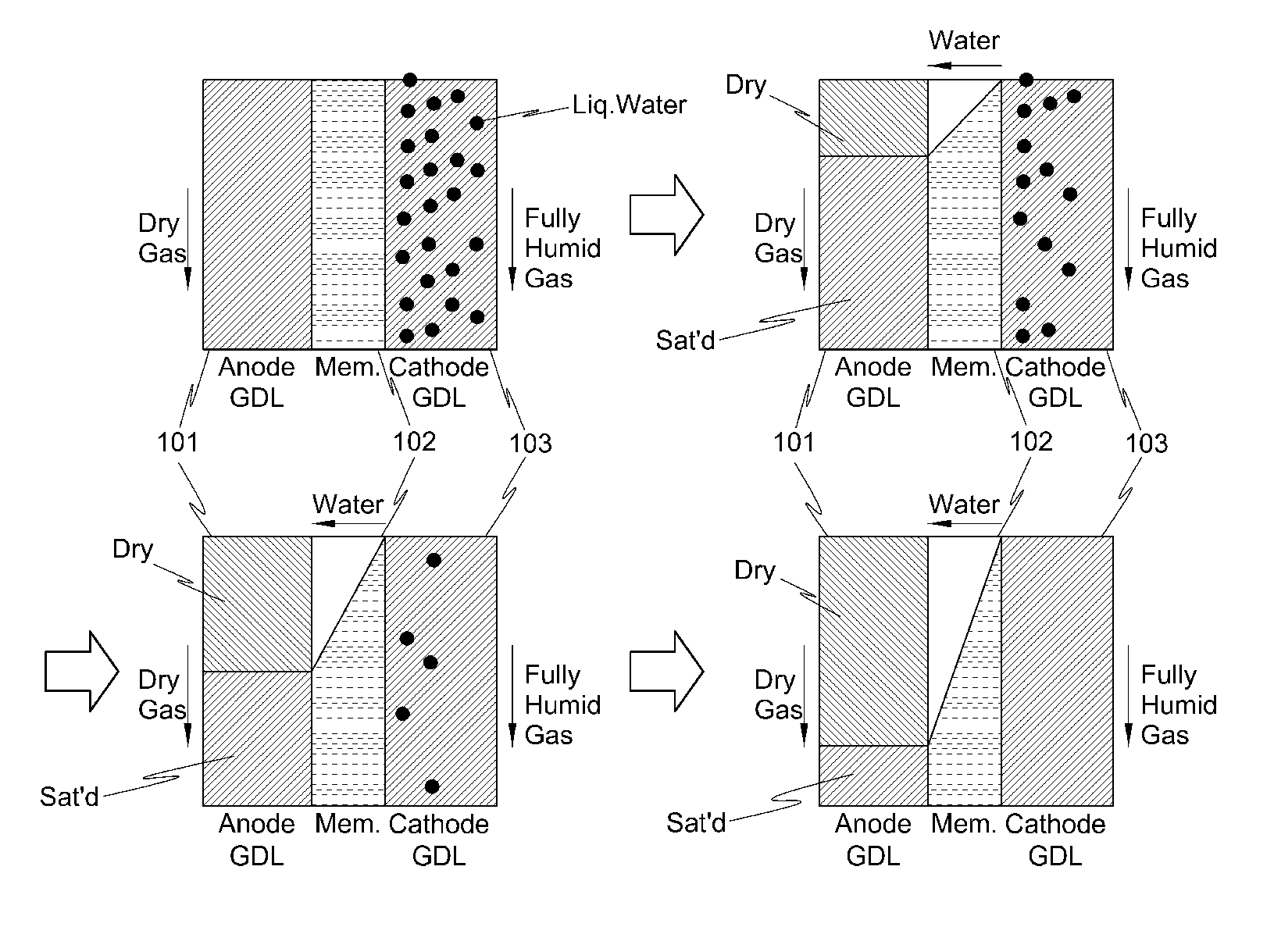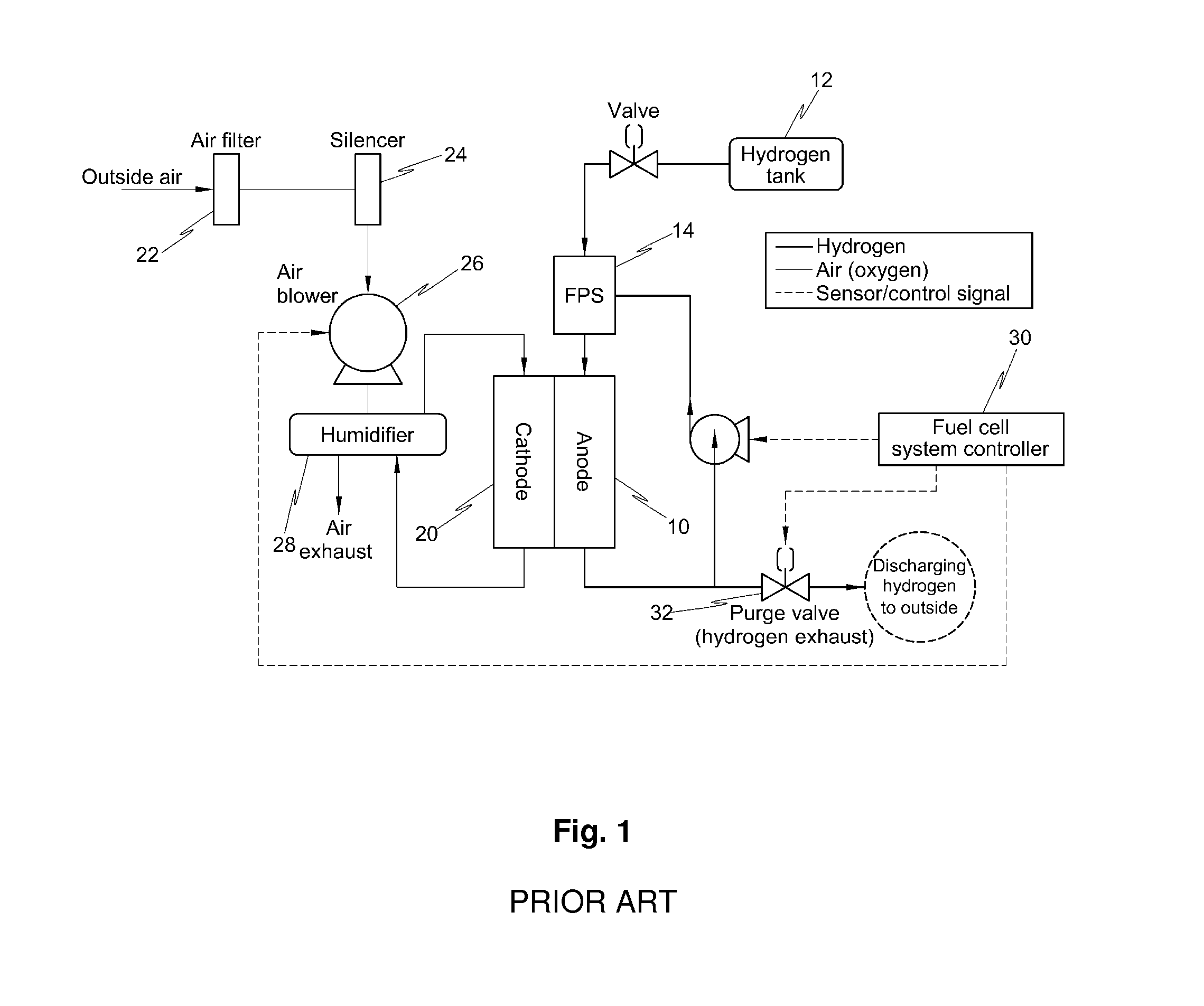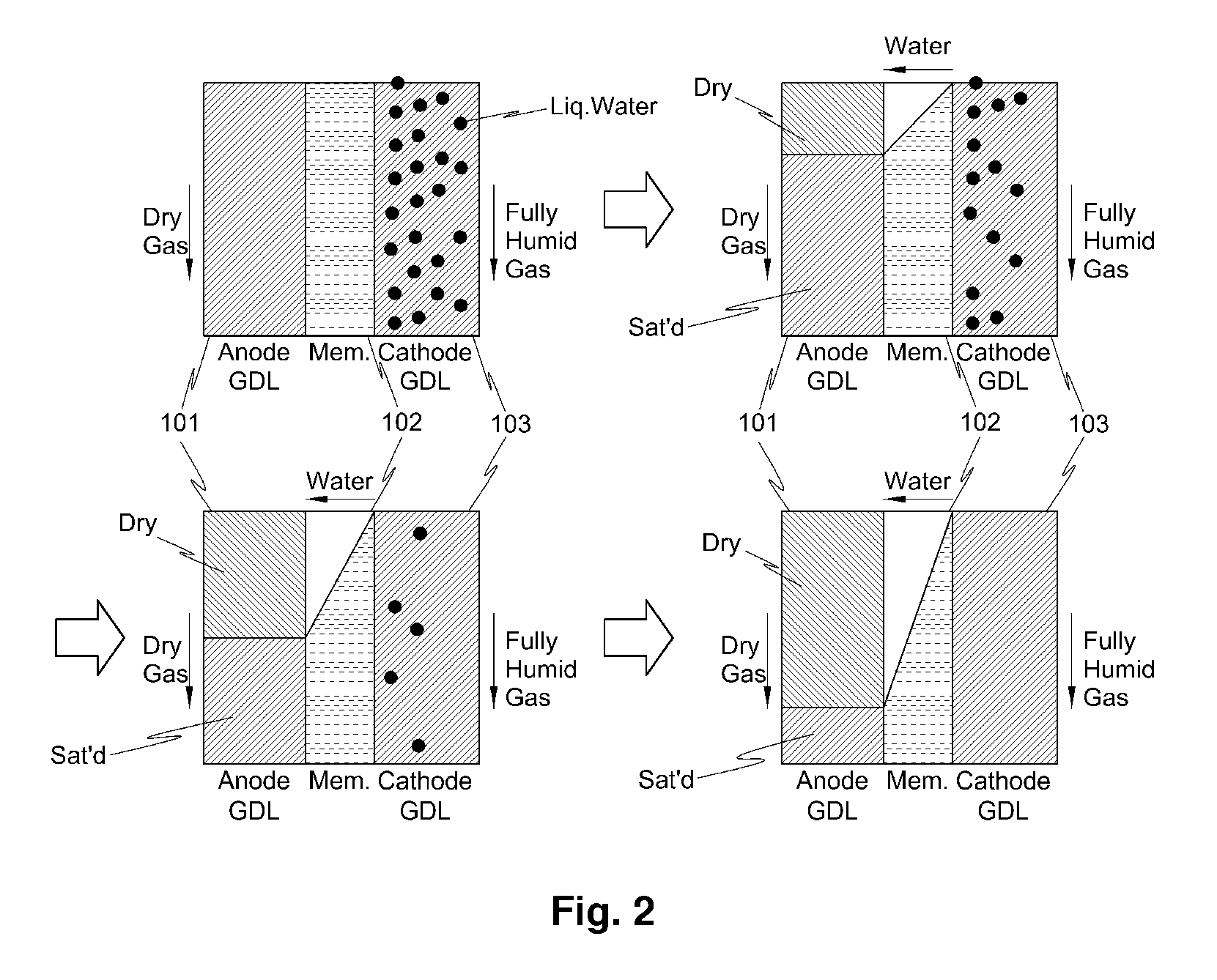Method for removing residual water from fuel cell
a fuel cell and residual water technology, applied in the direction of transportation fuel cell technology, transportation hydrogen technology, electrochemical generators, etc., can solve the problems of deteriorating the performance affecting the application of the fuel cell, and taking several hours to reach, so as to reduce maintain the water content in the membrane, and minimize the water content in the fuel cell
- Summary
- Abstract
- Description
- Claims
- Application Information
AI Technical Summary
Benefits of technology
Problems solved by technology
Method used
Image
Examples
examples
[0057]The following examples illustrate the invention and are not intended to limit the same.
[0058]Purge gases were supplied to the anode and the cathode of a fuel cell having an active area of 250 cm2 by varying the relative humidities of purge gases to the anode and the cathode (i.e., 100% / 100%, 0% / 100%, 100% / 0%, and 50% / 50%, respectively) after operation with various flow rate and relative humidity of fuel gas at various current conditions. The change in water content of the fuel cell was investigated using neutron imaging and the change in ion conductivity of the membrane 102 was measured with a milliohm meter After operating the cell at each condition (which is the pre-purge condition), loads were turned off at each current level, and the flow rate of purge gases was maintained constant for 5 minutes (purging for 5 minutes).
[0059]1. In Case of Relative Humidities of 100% / 100% at the Anode and Cathode
[0060]FIG. 4 is a graph comparing the membrane resistance and the residual wate...
PUM
| Property | Measurement | Unit |
|---|---|---|
| area | aaaaa | aaaaa |
| humidity | aaaaa | aaaaa |
| relative humidity | aaaaa | aaaaa |
Abstract
Description
Claims
Application Information
 Login to View More
Login to View More - R&D
- Intellectual Property
- Life Sciences
- Materials
- Tech Scout
- Unparalleled Data Quality
- Higher Quality Content
- 60% Fewer Hallucinations
Browse by: Latest US Patents, China's latest patents, Technical Efficacy Thesaurus, Application Domain, Technology Topic, Popular Technical Reports.
© 2025 PatSnap. All rights reserved.Legal|Privacy policy|Modern Slavery Act Transparency Statement|Sitemap|About US| Contact US: help@patsnap.com



